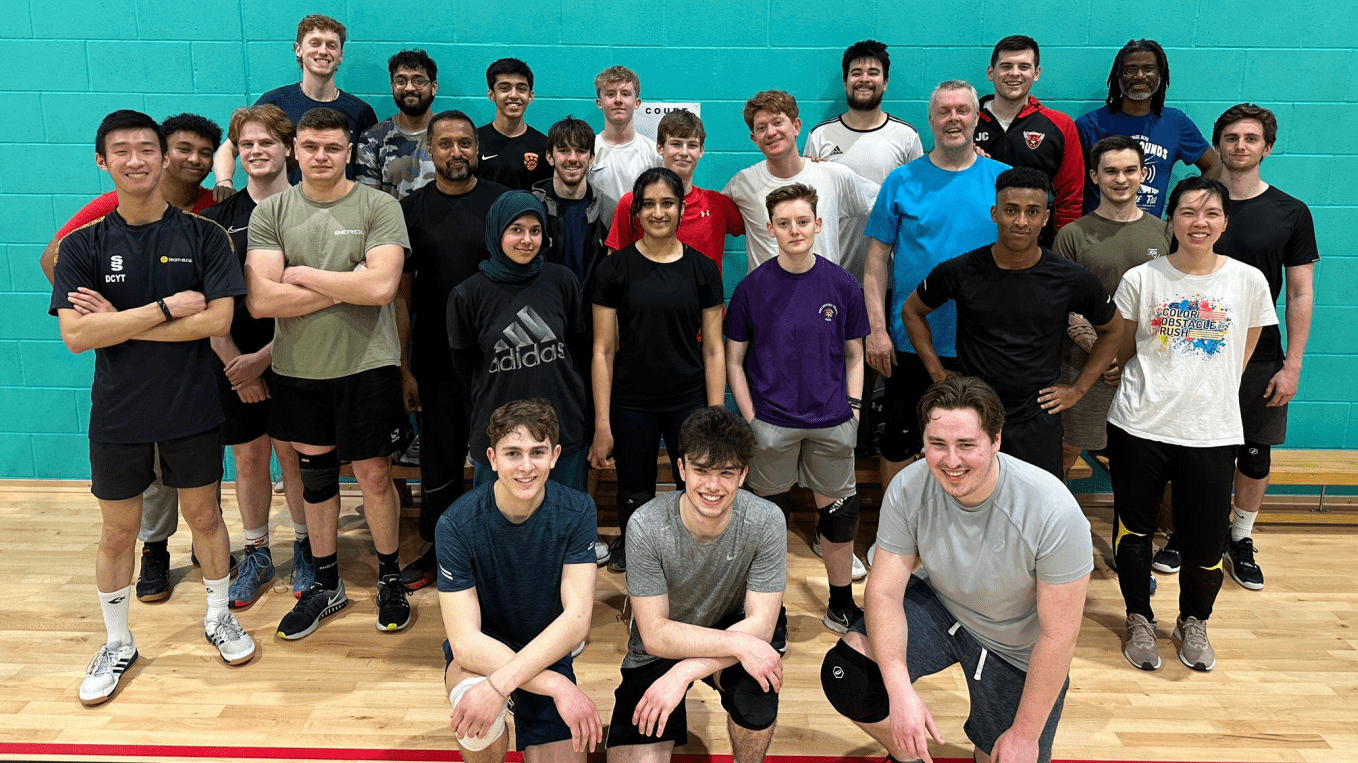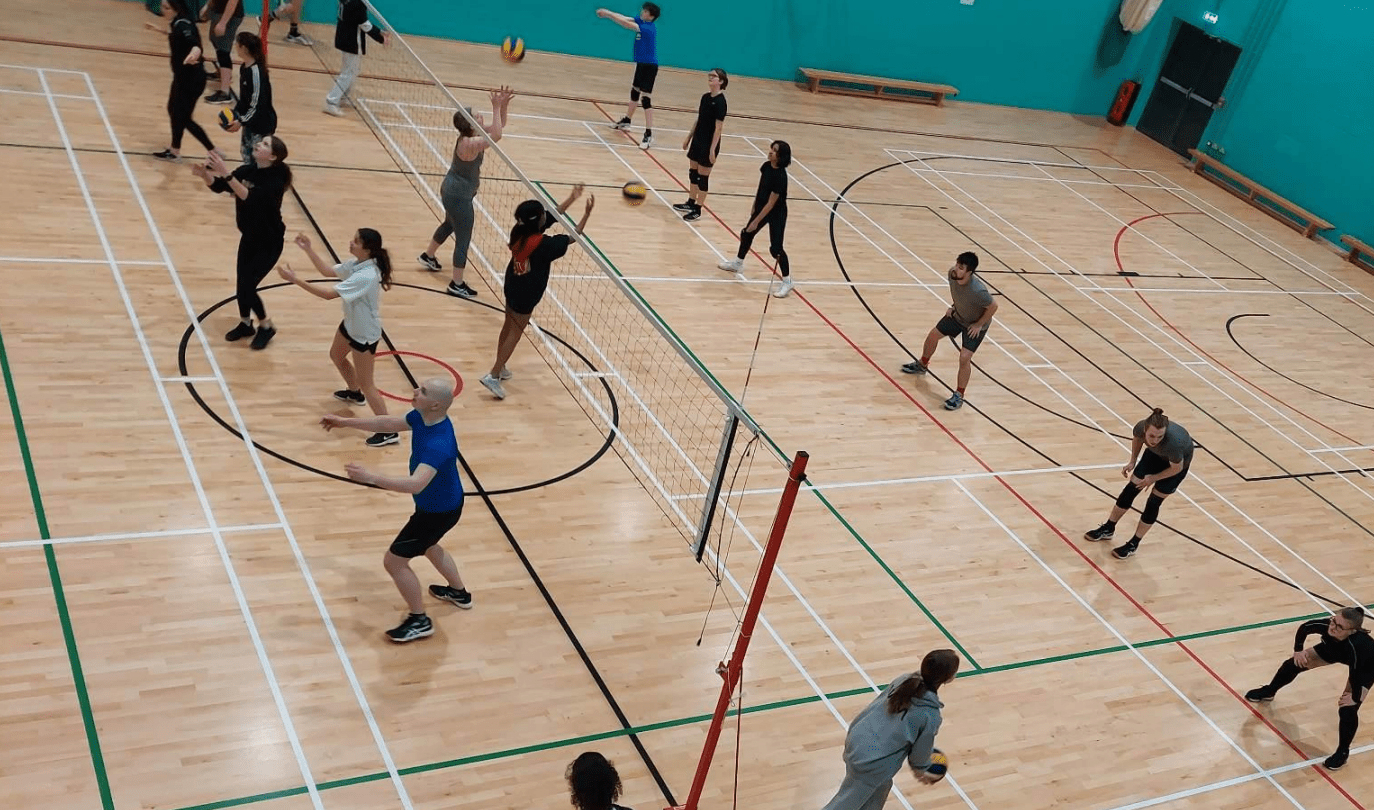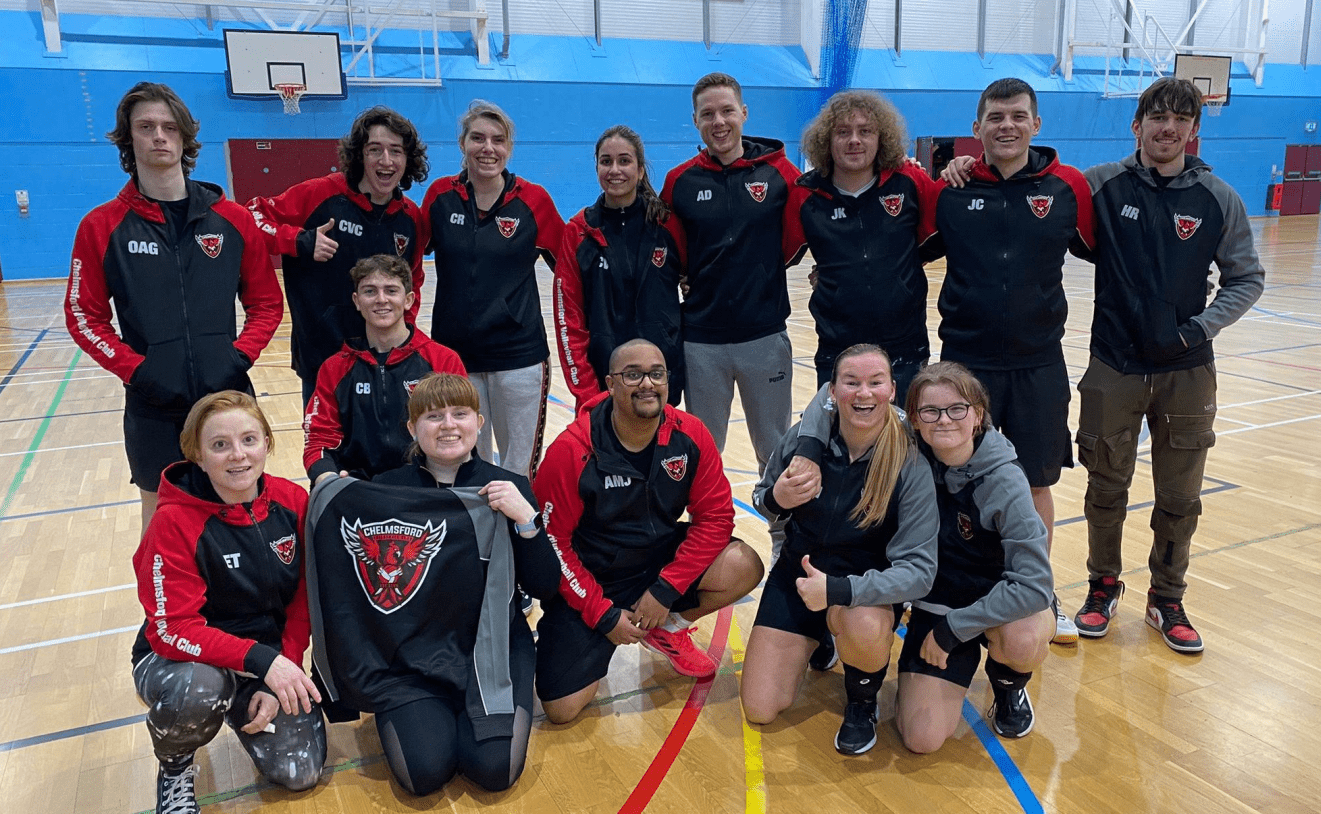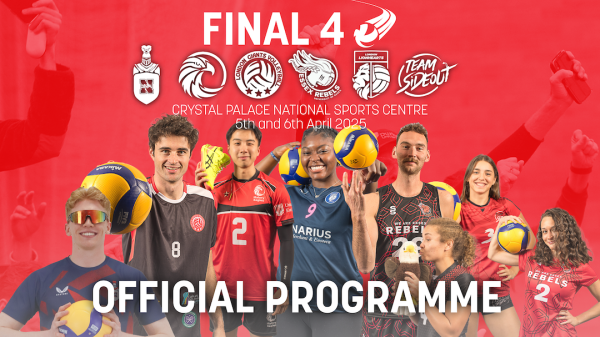26 Sep 2023
Club Case study: How Chelmsford Volleyball Club has thrived – and formed its own league

A passion to develop and learn
Because members of the club love the sport of Volleyball, they wanted to share it with as many players as possible. Given the fantastic appetite for the sport being seen in Chelmsford, and the East region in general, they felt it was their duty to provide opportunities for anyone who wanted to give the sport a try.
Chelmsford has now become more than just a Volleyball Club, with a true community in all senses of the word and it has been their aim to welcome as many people into this community as possible.
To do this successfully, the club needs to continue growing, learning, and enhancing how it operates and, to help with this process, the views, skills, and knowledge from a wide range of players and leaders are considered.
Finally, the club wanted to develop Volleyball in the region across all skill levels from beginners and juniors to adults and performance athletes. It wanted to build a programme that allows all athletes to train and compete fairly and happily. The CVC Committee and community has so much passion, energy, and enthusiasm for Volleyball, that they believe there is no challenge they cannot overcome.

Setting the club up to grow
To support the level of growth that has been achieved in the past three years, there were several key challenges that needed to be overcome, which included court space, coaching, club structure, funding, player welfare management, competition and collaboration.
In each of the categories, the club took action to overcome these problems.
Club Structure
The first thing the club realised it needed to introduce a structure that allows for safe and continual growth, which is when the “Groups Model” was developed.
In this, Chelmsford would act like an overarching governing body, and each individual group would become a Volleyball Club in its own right.
Each group would be given a dedicated Head Coach, Welfare Officer, Treasurer, and two teams. These groups would then work with the CVC Committee to ensure that coaching, welfare, and player treatment standards were being met.
The structure has proven to be hugely successful, as it gives a clear target for what is needed to achieve growth. For example, if in 2024 the club wants to introduce a new men’s group and a new ladies’ group, upskill two Head Coaches, two Welfare Officers, two Treasurers and four Team Captains (as each group contains two teams that train together). There will also be a need to have 16 men and 16 ladies trained and ready to fill the group.
When working to establish new groups, it is encouraged that they develop their own culture, structure, and ways of working, as long as this remains within the CVC Welfare standards.
The Club Committee still handles the more technical logistics, such as season fees, finances, court bookings, and welfare, but the idea is to keep everything as streamlined as possible for the groups so they can focus on training and competing.
The current groups are as follows:
Group A - Team Essex Estonians and Chelmsford Chilli Peppers (Men’s 1st)
Group B - Chelmsford Outlaws (Men’s 2nd) and Chelmsford Renegades (Ladies’ 1st)
Group C - Chelmsford Chaos (Ladies’ 2nd) and Chelmsford Desperados (Ladies’ 3rd)
Group D - Chelmsford Capybaras (Men’s 3rd) and Chelmsford Cobras (Men’s 4th)
Group E - Chelmsford Cardinals (CVC Juniors) and U18s.
Group F - Chelmsford Beginners group (no formal teams)
Group G - Chelmsford Games night.

Court space
This problem was slightly easier to solve. Once Chelmsford had taken up as much capacity as possible at its local court, it needed a new site that would be able to support its extra activities.
The club reached out to Chelmsford County Council to see if there would be any appetite to have a Volleyball Court installed at their flagship Leisure Centre (Riverside) and after pitching the benefits (i.e. the current growth of the club and the substantial bookings) they were on board.
With the new court now installed at the Riverside, operations are now across two locations. The new venue is thrilled to have new, exciting sports join its ranks (along with wheelchair basketball and ice hockey), as it looking to move away from more standard UK sports.
Coaching
While it is good having both space and players, without good quality coaches then it's worth nothing.
Since 2022, Chelmsford have successfully worked with Anna Knibbs at Volleyball England and Darren Lewis to upskill 28 Level 1 coaches in the area
The club has funded a significant amount of this activity to ensure that there are no blockers for coach development within the region.
The next challenge is convert these Level 1 coaches into Level 2 coaches.
Funding
Funding was and still is the biggest challenge faced, but ,in 2022, Chelmsford successfully managed to win a £3,000 fundraising bid from Greene King to develop Volleyball in the area.
This money was spent on coach upskilling, new equipment, and establishing the Chelmsford Volleyball League (more details below).
Now that money has been allocated, the aim is for the club to fund-raise more, so the current target is Sports England's Small Clubs Award.
So far, the club has been able to keep its Player Season Fee (which lasts from September to May) at £275, allowing the cover of court costs, while keep some money aside for club growth and management activities (Coach & Club registration, Welfare training, new equipment etc).

Player Welfare Management
This has been a particular focus for Chelmsford since the appointment of a new Welfare Officer to the Committee in 2022.
With a professional background in welfare management, she has been able to align the club welfare standards with those that are expected from Volleyball England (and in many cases, she has enhanced them further).
Some of the new standards introduced include:
● A comprehensive player sign-up form
● A complete coach and welfare officer training guide
● A safe and confidential welfare reporting system for the club
● A complete U18 player management guide for coaches
● A club welfare and mission statement

Collaboration
Outside of just focusing on the growth of Chelmsford the club, the CVC Committee has also worked to unify the Volleyball efforts across the various clubs within the Chelmsford area (including Team Essex, The Boswell's School, Anglia Ruskin University, and the Essex Police Volleyball Community).
By bringing these groups together, it has been possible to identify several key areas where mutual support has been beneficial
Key examples include:
● Darren Lewis from the Boswells School providing coach upskilling to CVC
● CVC providing coaches to ARU to help manage their growing number of players
● ARU players then joining CVC activities such as the Chelmsford Volleyball League
● TEVC National League players joining lower skilled groups (across CVC, ARU, and the Police Community to share their knowledge).
By working together and aligning goals at the start of each season, there are clear player development pathways within the area, allowing players to go from a beginner all the way up to NVL Division 1.

Competition
Another big challenge Chelmsford faced was around giving players fair, competitive, and accessible competition experience.
In Essex, the options previously for competition were NVL, which was significantly above the skill level for many players or The Essex Local League, which also posed both travel issues for players, especially Juniors and those in financial difficulty, and still did not give us fair level of competition (as many of the established clubs were playing at a level far higher than our beginners).
To overcome this problem, the club has created and funded the Chelmsford Volleyball League.
Division 1: Team Essex, Boswells U18s, Chelmsford Chilli Peppers, Stowmarket.
Division 2: Chelmsford Outlaws, Boswells U16s, Boswells U18 Ladies, Southend.
Division 3: Chelmsford Capybaras, Chelmsford Cobras, Chelmsford Cardinals (U18s), Anglia Ruskin University.
Whilst this league is only just beginning, it has already been a big success and naturally aligns with Chelmsford’s “groups” model, providing somewhere safe and local to develop new teams
It also brings challenges to the club’s stronger teams by inviting other clubs to join this league.
Matches are advertised on a Facebook page by clicking here, with the page seeing strong engagement and grow month on month.





